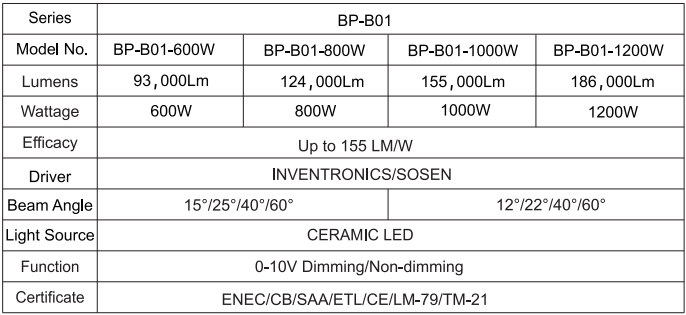Indoor/Outdoor Tennis Court Lighting Specifications:Tennis Court Flood Light Specifications
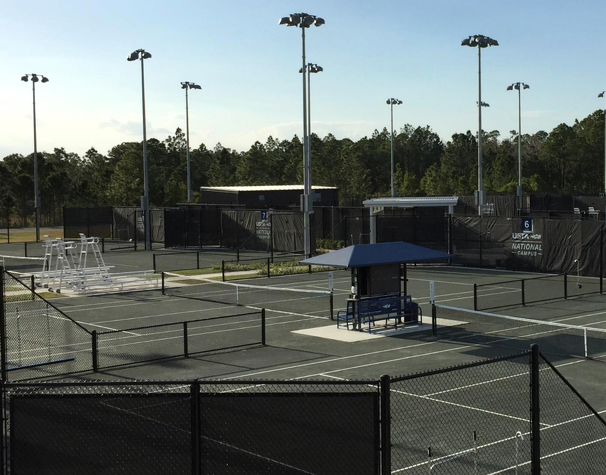
Directory:
1. Lighting Specifications Introduction
2. Lighting Specifications General Considerations
3. Lighting Specifications Key Terms
4. Lighting Specifications Standards
5. Lighting Specifications Recommendations
6. Light Sources
7. Ceramiclite Tennis Court Flood Light Specifications
1. Lighting Specifications Introduction
Lighting is required for indoor tennis courts and outside courts when no natural light is available. It is important because it:
• extends the playing time of a court;
• attracts more coaches and players; and
• achieves an increase in revenue from court hiring fees.
When lighting a tennis court, the objective is to ensure good visibility enabling both participants and spectators to follow the progress of a game. The ball, regardless of its location and speed, should always be clearly visible. Creating good visibility requires sufficient contrast to be created between objects and their backgrounds, good illumination levels and even distribution of light across the playing surface (uniformity).
It is important to note that lighting design and installation requires specialist engineering knowledge and must be carried out by competent experienced professionals following the guidelines required by government or any other relevant authorities.
It is also important to note that this guide is not intended to provide lighting recommendations and solutions in case of television coverage for which specialist knowledge is required.
2. Lighting Specifications General Considerations
When planning alighting installation, the following general design issues should be considered:
• The intended standard of play - this will govern the dimensions of the tennis courts, the level of illumination, uniformity, etc.
• Relevant government requirements and permissions in force locally.
• Installation and running costs, including maintenance, heating or cooling and light source replacement.
• Access to and the cost of a suitable power supply.
• General everyday maintenance including cleaning and repair lighting units.
• The effects on others of spill light.
3. Lighting Specifications Key Terms
3.1 Horizontal illuminance
This is the amount of light falling on the tennis court surface; it is often referred as lighting level. It is expressed in lux (or foot-candles in the USA). Eh average is the average value of the horizontal illuminance calculated/measured on the reference grid.
3.2 Uniformity of illuminance
This is a parameter describing how evenly light is distributed over the tennis court surface.
Emin/Ehave. is the minimum value of the horizontal illuminance calculated/measured on the reference grid divided by the average value.
3.3 Glare
This is the disturbing effect which impairs the vision; it depends mainly on the ratio between the direct brightness of alighting installation and the brightness of the tennis court surface.
GR is the Glare Rating factor assessing the quality of the installation from a glare perspective.
3.4 Colour temperature
This is the apparent colour of a light source; it is expressed in Kelvin (K).
3.5 Colour rendering
Colour rendering describes the ability of a light source to reveal and reproduce colours accurately. It is ranked by the colour rendering index Ra (from 0 to 100) where the higher the index the better the colour accuracy.
3.6 Obtrusive light
Spill light, which because of quantitative, directional or spectral attributes in a given context gives rise to annoyance,discomfort, distraction or reduction in the ability to see essential information. In the case of outdoor sports lighting installation obtrusive light is considered around the installation and not for spectators, referees or players within the sports area.
4. Lighting Specifications Standards
Some National Associations and governments have set different requirements for indoor or outdoor lighting and may use different units of measurement. However, as a guide, the following shows the minimum standards according to the European Standard for Sports Lighting (EN12193:2008)where:
• Class I: Top-level national and international competitions (non-televised) with requirements for spectators with potentially long viewing distances.
• Class II: Mid-level competition, such as regional or local club tournaments. This generally involves medium-sized numbers of spectators with average viewing distances. High-level training may also be included in this class.
• Class III: Low-level competition, such as local or small club tournaments. This does not usually involve spectators. General training, school sports and recreational activities also fall into this class.
5. Lighting Specifications Recommendations
5.1 General recommendations
Reference area
The Total Playing Area (TPA), for which the following lighting requirements are defined, includes the Principal Playing Area (PPA) and extends to a perimeter of 1 m inside the perimeter of the tennis court.
Reference grid for calculation and measurements
Calculations and measurements of the performance of alighting installation should be done on a specific grid, where grid points are determined by the length and width of the TPA.
For horizontal illuminance the reference level of the grid is the ground.
For calculation, it is recommended to define a grid of 15 points along the length direction and seven points along the width direction of the TPA, with a grid spacing of 2.5 × 2.5 m. Measurements can be done by using only one point out of two, on 5.0 × 5.0 m spacing (see Fig. 3).
Fig. 3. Reference grid for calculation and measurements.

Maintained values
The lighting level provided by an installation will decrease throughout its life, mainly as a result of depreciation of lamps and luminaires (see also section 7 below).
Average illuminances given in table.5.2 and table 5.3 are maintained values under which the lighting level should never fall below, during the whole operation of an installation.
Usually a maintenance factor is specified to compensate for ageing and soiling of the light sources, reflectors and front glasses. In the absence of relevant information, it is recommended to use a maintenance factor of 0.8.
Spectator area lighting
For the visual comfort of spectators rather than safety or emergency reasons, the lighting level should beat least 10 lux.
5.2 Lighting Specifications recommendations for outdoor tennis courts
fig4. Summary of the lighting criteria for outdoor tennis courts. The above average horizontal illuminances are maintained values.

fig 5. Limitation on properties, brightness and sky glow - Maximum obtrusive light (EN 12193).

fig 6. Limitation of effect on road users - Maximum values of threshold increment (EN 12193)

5.3 Lighting Specifications Recommendations For Indoor Tennis Courts
fig 7. Summary of the lighting criteria for indoor tennis courts. The above average horizontal illuminances are maintained values.

6. Light Sources
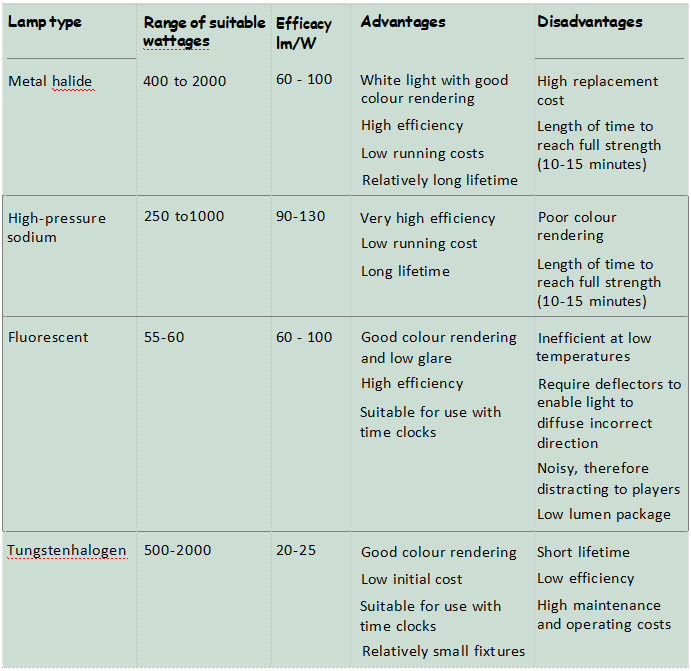
7. Ceramiclite Tennis Court Flood Light Specifications
7.1 Tennis Court Flood Light A01 Specifications
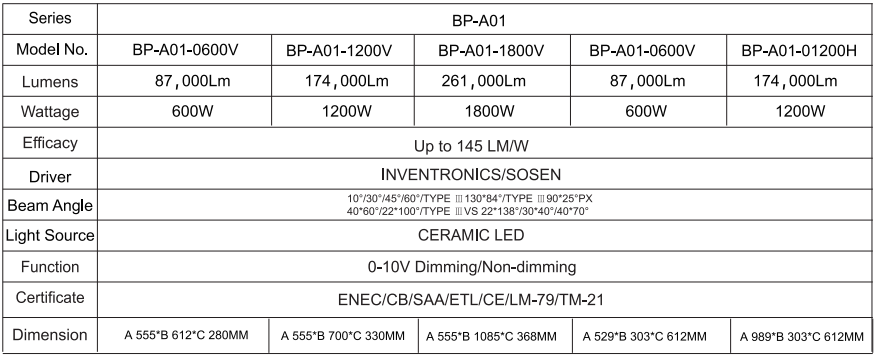
7.2 Tennis Court Flood Light A02 Specifications
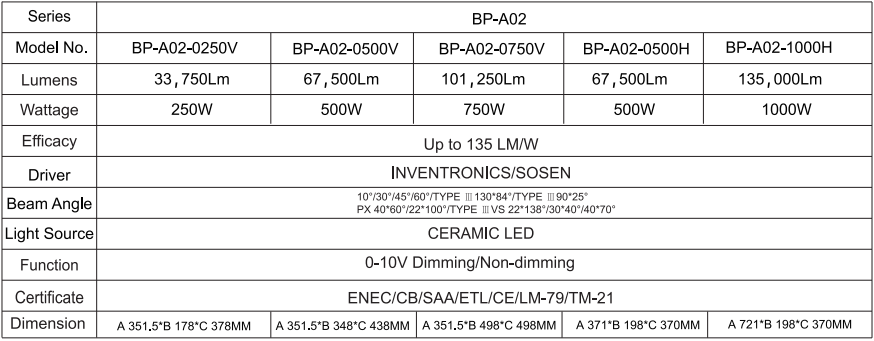
7.3 Tennis Court Flood Light B01 Specifications
